Technical analysis of the Racing Point RP19: many apparent changes
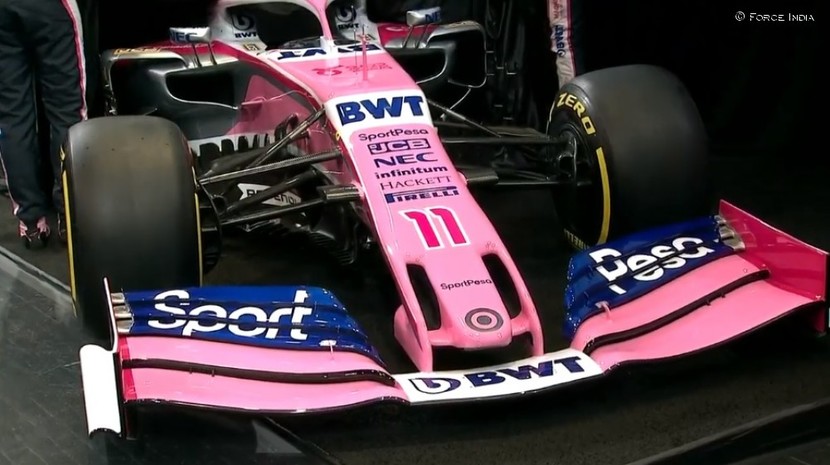
Gone Sahara Force India This is a thing of the past after the purchase of the new owners, among them the Canadian billionaire Lawrence Stroll, father of Lance Stroll, who will form a team together with the Mexican Sergio Pérez. Many things have changed, but not so many if we analyze the car technically. Now the renowned Racing Point as they have registered in the championship has presented a decoration dominated by pink and blue as rumored by the new sponsors for F1 2019 .
influenced the investment of the surname Stroll in the team, which has not only set Stroll as pilot, but also they have taken all the material to Canada, the investor's country of birth, to present it from there. Now, Racing Point will also not follow the acronym JVM for their models, since they represented the initials of Vijay Mallya, the previous owner who has been convicted as they know of fraud. Now it will be known as Racing Point RP19 . In addition, as we have said, the colors have been modified to mimic those who use the logos of the main sponsors: BWT (pink) and the new Sportpesa incorporation (blue).
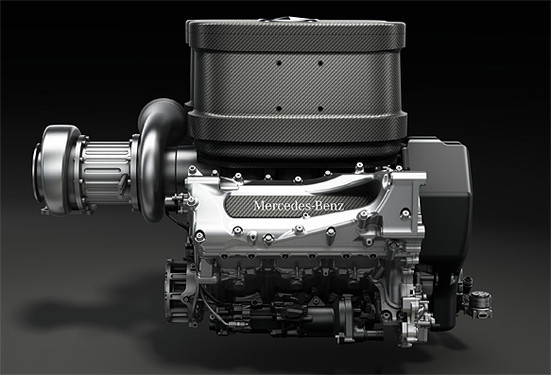
In addition, they continue with the brands of sponsors already seen in last year, like Claro that comes from Carlos Slim, the Mexican billionaire who also contributes to Sergio Perez to stay there, and the technological ones like Japanese NEC, Hackett clothing, Infinitum, etc. Of course, they also continue with their agreement to maintain the Mercedes engines under their chassis, which will provide them with a new and redesigned power unit with more efficiency and performance as explained in the technical analysis of the Mercedes W10, that will give them a mechanical advantage over their rivals, and if the Mercedes engines continue with the same rock reliability as in previous years, then they can fight for points.
The technicians of Force India, now Racing Point, the truth is that they manage to do wonders with the budget. They do not have a big budget and they have been able to position the car year after year in the middle of the grid and surpass teams that double their budget in some occasions. Something that has much merit, but this year, the new owners have spoken and again have set the bar too high, something that I think is a big mistake. They wanted to rub shoulders with the big ones, to be among the first 5 cars, much higher according to the statements, since they have been able to inject a lot of money into the team. But one thing is to say it, and the other is to do it. I think you have to be cars and see where each one is and not belittle rivals , as it is a tremendous lack of respect.
And I say this because I was disappointed the new design , because for this new investment and those expectations so high, little has changed the car and it does not seem an innovative design as to make a great leap forward ...
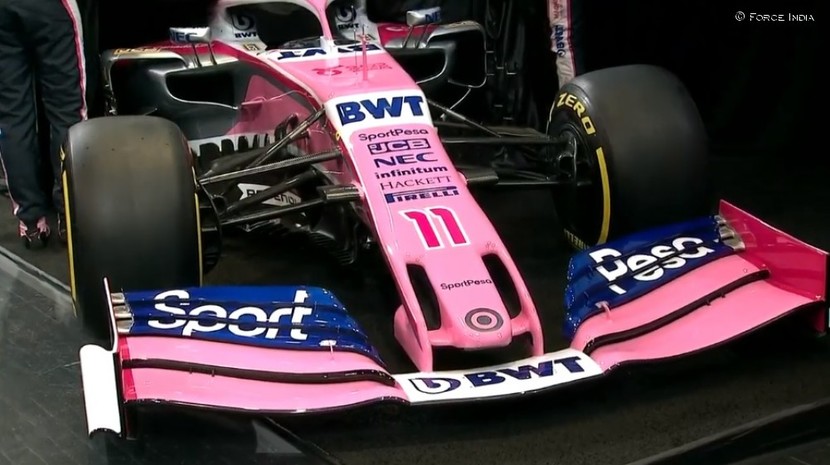
The new RP19 has a new front wing adapted to the new nominative, extremely simple with 5 planes and without any profiles about it, those vortex generators that have been banned by the new season. Also very clean the endplates, which only have the rim and nothing else, something that no longer catches us of surprise after seeing all the models that have been presented by now.Some of the fears with more curve and others with less, but all similar ...
The suspensions are quite similar to those of last year and do not present major changes. What is striking are the brake cooling ducts , which are quite large, with a multitude of ducts or separators inside to redirect the flow that enters through them, and another small aperture aredonda added However, they do not add aerodynamic appendages as in the past, so they comply with the new technical rules. Another thing we can see in this front image are the brackets that join with the front wing, which are small and do not extend backwards as in other models, nor present the famous McLaren-style brunches.
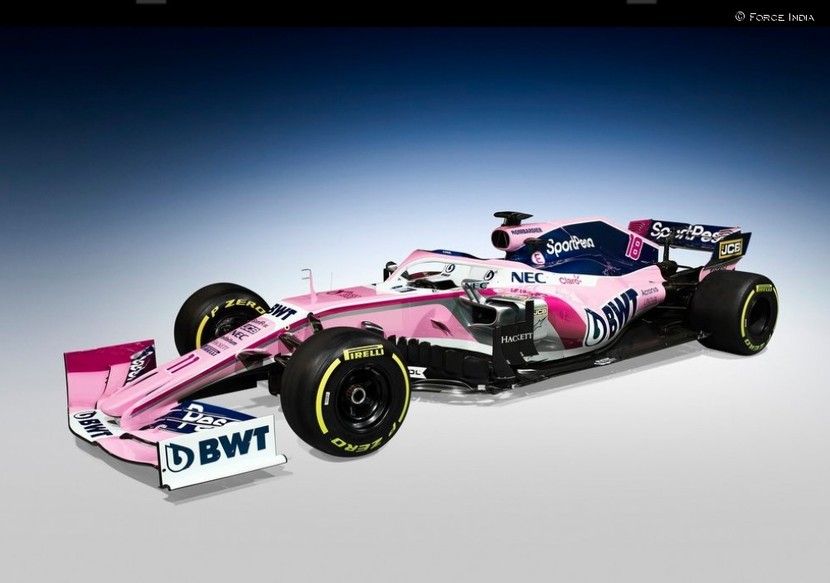
Another thing that does not catch by surprise is el morro , which follows the same style as they have been using for some years. It is a very elongated nose that leaves two large side holes to let air pass to the back as we discussed in other years. These channels are curved and exit through a hole behind the nose to guide it just where they want to bring more flow to the back without the regulations prohibiting the high noses prevent, or at least, minimize the negative impact of the nose. . Likewise, they have a step just where the suspensions are anchored, to give it a more pronounced drop and lower it more, as other teams do, such as Red Bull. However, it is a little stylized nose, very wide and square that at first glance, gives the feeling that it generates more drag than other designs.
The area under the nose is also simple in terms of the aerodynamic perfies that exist. It is seen in this side image that the front nut is hollow, so it could be a blower bushing ?, Of course that would explain that the brake lines are larger and have such internal complexity. The halo also has a clear design of aerodynamic appendages, following the trend that seems to be the "fashion" of this year, although we have seen some model this year that still retains the aerodynamic profiles on the halo to redirect the air that travels back or, better said, to minimize the tremendous aerodynamic impact that this safety element has.
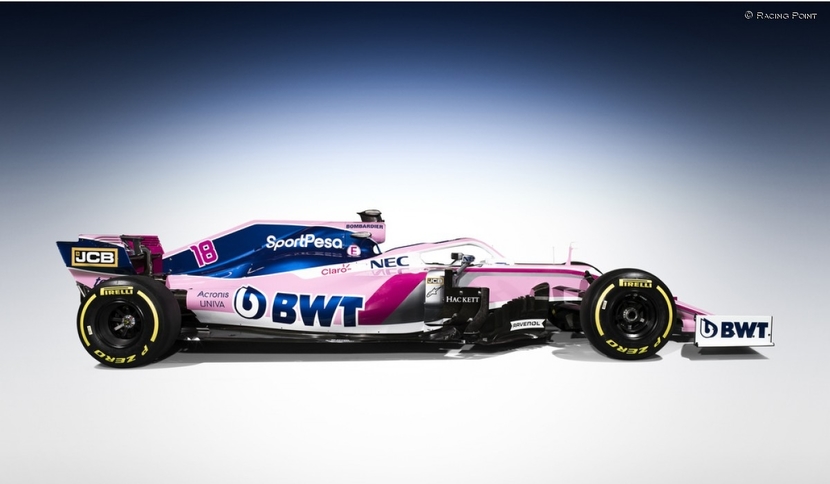
The average area of the vehicle is complex, but it is not one of the most complex we have seen, far from it. We see in the pontoons vertical profiles of three elements and some bargeboards with a design that follows that peculiar shape that many call saw teeth, all to redirect the air to the back area in an appropriate way. As every year I explain, keep in mind that the car is designed from the front, it is the front wing that compromises the design of the rest of the car. Depending on the load generated by the front wing, the rest of the car is designed to try to compensate for that load on the rear axle. This is why it is difficult to copy certain solutions from the front of the car at times, because a large part of the car would have to be redesigned.
The side view does not reveal a huge rake like other designs , they have a little, but neither is it an exaggeration. As for the line that follows, it is quite traditional, nothing that draws attention. That's why I said that the words that were said before the current season could be too optimistic for what I'm seeing.But before that, look at the supports of the mirrors, they are double, something that we have not seen until now, and they are anchored in the pontoon itself. That said, if we start with the airbox, it has a medium and oval opening, with two flow dividers inside that leave three clear parts. The plant already knows that it is for the intake of air that the turbocharger needs to inject the compressed air into the cylinders of the engine. Not being an atmospheric engine, you do not need to maximize this air intake, so you can leave a gap so that air enters here for other systems as we have returned one and a thousand times (intercooler, oil tank of the gearbox, ERS).
Under the airbox, it can be seen that the engine cover is very bulky in that area, also seen in the side view image. It is possible that the new architecture of the Mercedes engine has moved part of its auxiliary elements forward, something that has a clear advantage in terms of vehicle dynamics, but also if you move mass or volume to that area you can clear the rear area to narrow plus the engine cover by the rear, which has aerodynamic advantages by leaving more room for air to travel through the upper plane of the diffuser and help extract air traveling under the flat bottom and is expelled by the diffuser. Not dying, if you move mass to a higher area, as does Red Bull, it also has its disadvantages in terms of raising the point of gravity, which is always sought to be as low as possible.

The pontoons are quite large , both in dimensions and as for the cooling appetite they have. I do not mean to say that they are older than other years, but they are not the smallest models we have seen, which is not great news for the drag. The shots have been raised, to leave more channel under them to bring air to the desired rear area, but not surprising at all. Perhaps with this analysis I am paying for the optimism or the high expectations that were had last year by the new owners to get to be where the great ... But sinseramente is one of the cars that has disappointed me, and that this year usually all those seen so far are quite conventional, except Red Bull and Mercedes where I have seen good things.
Racing Point is the car that has let us see the the diffuser , but still, practically nothing is seen, reason why this image has been taken with a little mischief to not show the interesting thing. By the way, we can see the tubes (waste) that accompany the main exhaust pipe that follow the sides in the Mercedes engine, something that has not changed as we saw in the Ferrari of Haas. As for the rear wing, it is straight and not the smallest I have seen and the endplates are simple, the only thing that stands out is what I have told you in the technical analysis of the Mercedes W10 and that has to do with the design of Williams FW42 , that has presented bránquias in the rear endplate although in principle they should be prohibited. But like Williams, Racing Point has dispensed with the edge of the endplate, so the brunks are not really brochures, but tips without fastening at one end ...
You may be interested

